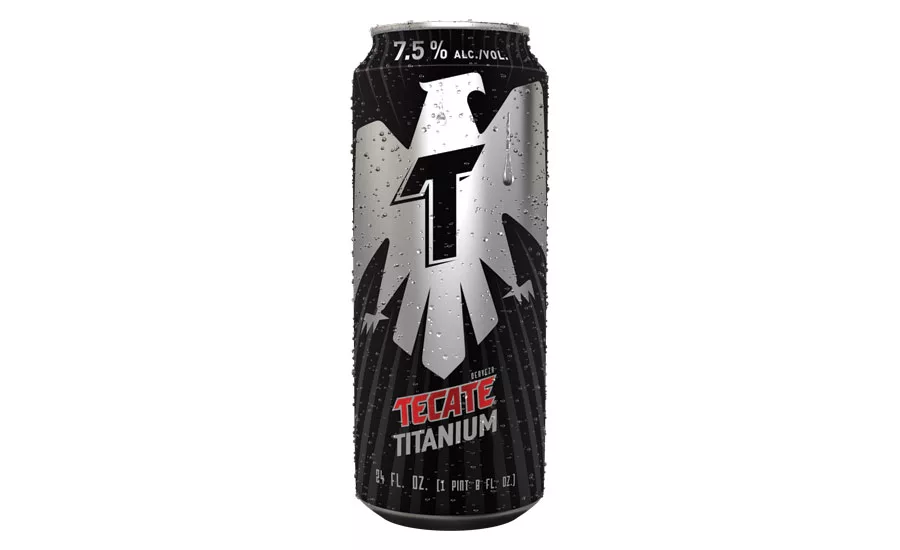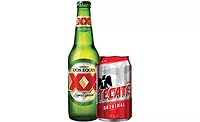2020 Beer Report: Imported beer segment driven by factions
Mexican beer continues to drive sales

As beer consumers expressed a growing desire for new styles and flavors, the imported beer segment was among the markets that benefited from this demand. Analysts highlight that trend resulted in import beers outpacing the overall U.S. beer market in previous years, with projections suggesting that performance will continue.
Chris Lombardo, senior analyst and team lead for Los Angeles-based IBISWorld, notes that the market research firm expects import beer to increase at an annualized rate of 3.4 percent over the five years to 2020, bringing its sales total to $6 billion. Lombardo notes that the five-year forecast to 2025 also looks bright for import beer.
“Imports are forecast to continue growing over the five years to 2025; however, the breweries industry is anticipated to return to growth during this period,” he says. “Imports are still projected to outpace the overall breweries industry, largely due to the same factors that have made them popular with consumers in the past — variety and differing styles.”
Although domestic brands have started to embrace more diverse profiles and flavors, this intrigue has been a key driver for import beers. Lately, smaller brands are enjoying that appeal as well.
“The largest draw to imported beers is the varying styles when compared with domestically produced brands,” Lombardo says. “While this has begun to change, as large and small breweries incorporate new varieties into their catalogues, consumers enjoy discovering new and niche international brands that offer different flavor palettes than what they may be used to in the U.S.”
However, exploration of beer styles is not the only factor impacting the performance of imported beer.
“While its impact varies, the value of the U.S. dollar generally has some level of influence over imports,” Lombardo explains. “When the value of the U.S. dollar increases, imports tend to increase, as many international products become relatively less expensive. Conversely, when the value of the U.S. dollar decreases, import growth tends to slow or decrease altogether. The value of the U.S. dollar has a minimal effect on industry imports. Still, a significant shift in the value of the U.S. dollar compared with its major trading partners impacts industry trade.”
Brian Sudano, managing partner at New York-based Beverage Marketing Corporation (BMC), notes that import beers also evoke emotional cues with consumers.
“Imported beer comes with the imagery and emotional attachment associated with its origin (e.g., Corona equals beach, sun and sand in Mexico),” he says.
Meanwhile the product can act as connection to its place of origin through its taste profile. “Imported beer generally takes on the local characteristics of beer in the international markets,” Sudano says. “Generally, European beers are more bitter.”
(Brand family)
| Dollar Sales | % Change vs. Prior Year | Case Sales | % Change vs. Prior Year | |
| Corona | $2,447,664,103 | 3.2 | 73,528,640 | 1.8 |
| Modelo | $2,353,855,480 | 19.2 | 74,567,448 | 17.1 |
| Heineken | $792,924,373 | -0.3 | 24,082,204 | -1.9 |
| Dos Equis XX | $376,654,559 | -1.5 | 11,664,600 | -2.3 |
| Stella Artois | $373,320,448 | 0.7 | 10,354,523 | 0.2 |
| Tecate | $175,511,690 | -13.5 | 8,476,912 | -14.8 |
| Labatt | $149,737,899 | -2.5 | 7,821,503 | -4.4 |
| Guinness | $149,428,344 | 3.5 | 3,616,210 | 2.3 |
| Pacifico | $146,301,237 | 17.3 | 4,573,964 | 15.5 |
| Fosters | $77,737,147 | 3.2 | 2,924,936 | 1.8 |
| Total sales* | $7,491,635,814 | 6.1 | 235,998,506 | 4.3 |
*Includes brands not listed.
Source: Information Resources Inc. (IRI), Chicago. Total U.S. supermarkets, drug stores, gas and convenience stores, mass merchandisers, military commissaries, and select club and dollar retail chains for the 52 weeks ending Dec. 29, 2019.
Mexican boost
In its 52-week sales data ending Dec. 29, 2019, Chicago-based Information Resources Inc. (IRI) notes that import beer market dollar sales were up 6.1 percent, totaling more than $7.4 billion, in total U.S. multi-outlets with convenience. Case sales were up 4.3 percent during that same timeframe.
Although this reflects positively on the beer segment, analysts note that this might not tell the full story of import beer sales in the United States.
“It is misleading to say imports are outperforming the U.S. market when it has been essentially just Mexican imports over the past five years,” BMC’s Sudano says. “If you were to eliminate Mexican imports, imported beer has not continuously outperformed the total beer market. If, and when, Mexican imports begin to slow down dramatically, the market will outperform imports. Especially if the seltzer trend continues to grow as the pace expected in 2020.”
According to sales data from Nielsen, total Mexican beer sales in off-premise were up 9.4 percent for the 52 weeks ending Dec. 28, 2019, accounting for more than $5.9 billion. By comparison, the New York-based market research firm reports that total import beer sales were up 6.6 percent, totaling more than $8.3 billion in sales during that same timeframe.
“Several reasons to include [are] product taste, proximity to U.S., authenticity of brands, Mexican American population affinity to brands, etc.,” Sudano says.
An area within the import beer market, however, seems to struggling. In a July report titled “Beer in the US,” Chicago-based Euromonitor International notes a stagnation among imported Lager beers.
“In recent years, U.S. consumers enthusiastically took to imported Lagers, increasingly choosing them over more affordable domestic options,” the report states. “The large number of new product launches in the domestic premium segment, however, are increasingly taking shelf space in major retailers, and as a result imported premium lager is showing its first signs of faltering.” BI
Looking for a reprint of this article?
From high-res PDFs to custom plaques, order your copy today!






